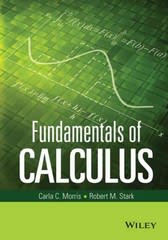Question
The chi-square test is an appropriate bivariate test when you have: Question 1 options: Two continuous variables Two nominal variables A nominal variable and a
The chi-square test is an appropriate bivariate test when you have:
Question 1 options:
| Two continuous variables | |
| Two nominal variables | |
| A nominal variable and a continuous variable |
Question 2 (1 point)
The simplest bivariate chi-square table displays the relationship between two grouped variables, each of which has two values. In each of the four cells of that table, there is a number tells how many individuals are in that cell. Those numbers are:
Question 2 options:
| The row marginals | |
| The column marginals | |
| The observed frequencies | |
| The expected frequencies |
Question 3 (1 point)
The big calculation that you do when you test a hypothesis using the chi-square test is the calculation of:
Question 3 options:
| The row marginals | |
| The column marginals | |
| Chi-square critical | |
| Chi-square obtained |
Question 4 (1 point)
You use Appendix C of your text ("Distribution of Chi-Square) to find:
Question 4 options:
| The row marginals | |
| The column marginal | |
| Chi-square critical | |
| Chi-square obtained |
Question 5 (1 point)
For the chi-square test, you reject the null hypothesis if:
Question 5 options:
| The column marginal > row marginals | |
| Chi-square obtained > chi-square critical | |
| Chi-square obtained < chi-square critical |
Step by Step Solution
There are 3 Steps involved in it
Step: 1

Get Instant Access to Expert-Tailored Solutions
See step-by-step solutions with expert insights and AI powered tools for academic success
Step: 2

Step: 3

Ace Your Homework with AI
Get the answers you need in no time with our AI-driven, step-by-step assistance
Get Started


